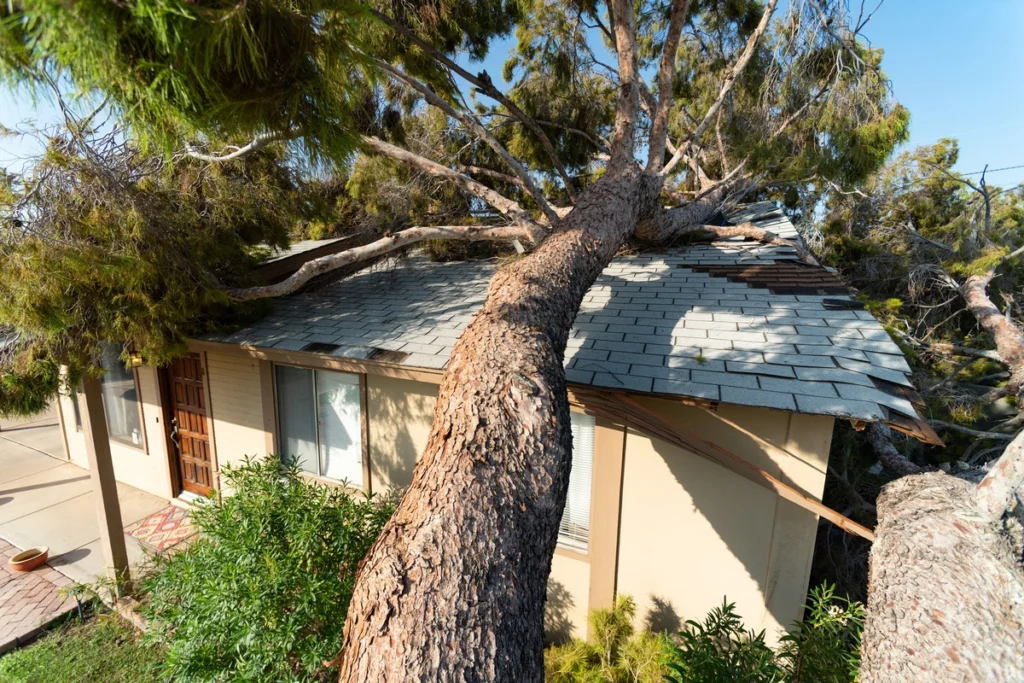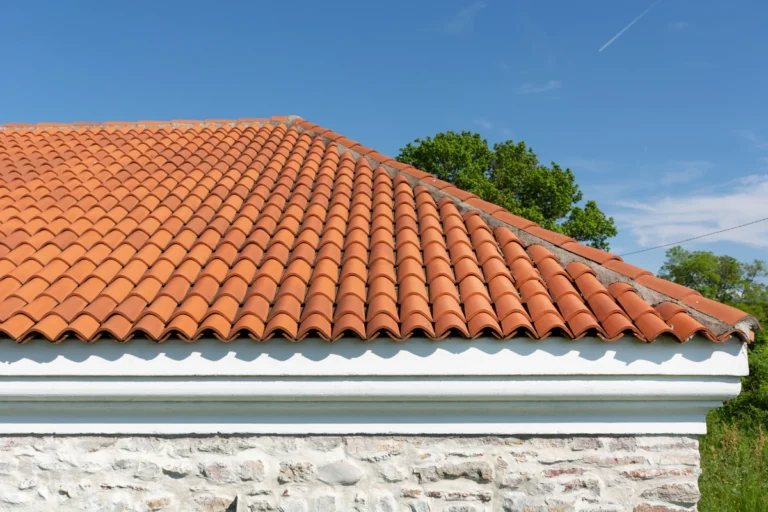Being a handy homeowner can be an ideal way to save money as you take care of your home’s needs, but when it comes to roof repair, it is important that to take extra care.
If you miss a step or don’t have the right tools and supplies, you could end up with a bigger problem on your hands. And when there’s an emergency, we aren’t always thinking clearly.
Emergency roof repair is often needed after a storm causes severe damage. The first step in recovering from sudden tears, leaks, or broken pieces on your roof is to inspect the damage. Photos are crucial for insurance purposes and getting estimates from professional roofing experts is the best course of action.
Whether you need emergency tarping and repair services or are planning to DIY the damages, follow these emergency roof repair tips for the best results.
8 Emergency Roof Repair Tips for Handy Homeowners

When living in an environment with harsh weather and storms, it’s important to be prepared for any roofing emergency that may arise.
You can experience problems such as an emergency roof leak, which can cause further damage to your home by weakening the structure of the home or roof, seeping into and ruining the flooring, or introducing dangerous mold growth.
Other damages such as fallen trees, torn-off shingles, or roof cracks and craters can let in the elements, rodents, and pests. This can result in further damage to your home’s ventilation, electricity, or worse. So it’s imperative that you don’t ignore the issue.
With the right tools and materials, you can minimize damage and get your roof back in working condition in no time!
Here are eight tips to help you repair your roof in an emergency:
1. Inspect the Roof Regularly
You can inspect your roof after harsh weather conditions or every few months to ensure it’s still in good condition. Check for any visible signs of damage, including missing shingles, holes, cracks in the roof, or a leaking roof.

For instance, after heavy rainfalls, it’s essential to check for signs of storm damage in your gutters and downspouts for any back-ups or blockages. The overflows can cause increased water pressure and can create problems on your roof. They can also increase debris or clogs, which can cause further damage and compromise the structural integrity of your roof.
When you perform regular checkups, you can spot damage early and address it before it gets worse.
2. Document Damage
Once you’ve identified the roof damage, it’s important to document it with photos and notes. It can help you better understand what needs to be repaired and make it easier to provide details when seeking help from a roofing contractor.
You can register the damage in an online system or a physical logbook, where you can add notes about the repairs and materials used for each repair. You can also track the date of each repair and when it may need to be redone or replaced.
3. Tarp Any Leaks or Holes
If you’ve found any roof leaks or holes, the next step is to tarp the area. It can help stop water from coming in and further damaging the roof. You can pick up a tarp at your local hardware store, which is easy to set up.

Simply lay the tarp over the damaged area and use a hammer or nail to secure it in place. Be sure to use nails that are slightly shorter than the tarp so that it does not poke through. However, tarping the area is only a temporary measure. You’ll need to replace or repair the roof as soon as you can for a more
4. Address Minor Repairs
If you’ve found small issues or minor repairs, such as missing shingles, you can address them immediately. You can pick up roofing supplies such as sealants and roof cement at your local hardware store to help patch the area.
You can also use these materials to patch any holes or cracks in the roof. Follow all safety guidelines and use protective gear when working on the roof.
5. Call Your Insurance
If your roof is damaged and needs extensive repair, it’s essential to contact your insurance provider. They can cover the cost of the repairs and help you recover any losses due to the damage. However, you need to check your policy documents for details on what is covered in case of an emergency repair.
When filling your claim, it is essential to provide the insurance company with all documents and photos of the damage so they can assess the extent of repairs needed. You can also ask for an estimate from a roofing expert and provide it to the insurance company.
6. Hire an Experienced Roofer

It’s essential to hire a team of professionals who can perform the repairs safely and correctly. An experienced roofer can help you assess the damage and provide you with an estimate of the cost of repairs or replacements.
They can also provide valuable advice on the best materials to use and explain what steps need to be taken to ensure a successful repair job.
7. Schedule Repair Work
Once you’ve contacted the insurance provider and organized a team of professionals to carry out the repairs, it’s time to schedule the repair work. It’s essential to keep in mind that the weather can affect the length of the job, and it’s best to schedule it when the weather is expected to remain dry.
It’s also essential to plan ahead and prepare your home for the work being carried out. You can move any furniture or other belongings that may be in the way of the repair work and cover up any valuable items with plastic sheeting.
8. Maintain Your Roof Regularly
After the repairs, it’s important to maintain your roof regularly to keep it in good condition. Maintenance can include regular roof inspections and cleaning to ensure that no damage has occurred since the last repair job.
Maintaining your roof regularly can help you save money in the long run, as you can spot and fix any issues before they become more serious. It’s also a good idea to keep records of each repair and maintenance job you’ve done in the past.
Conclusion – DIY Your Emergency Roof Repair Today
When your roof is damaged, it can cause stress, worry, and costly emergency repairs. However, with a few simple steps, you can repair your roof and have it running like new in no time. You can assess the damage, call your insurance company, and schedule your repair work with a team of experienced roofers.
If you’re located in the Florida area, contact Trust Roofing for fast & reliable roofing.
You can also address minor repairs yourself, such as patching up missing shingles or holes. However, once the repairs are done, it’s essential to maintain your roof regularly to keep it in good condition and prevent any future problems.




